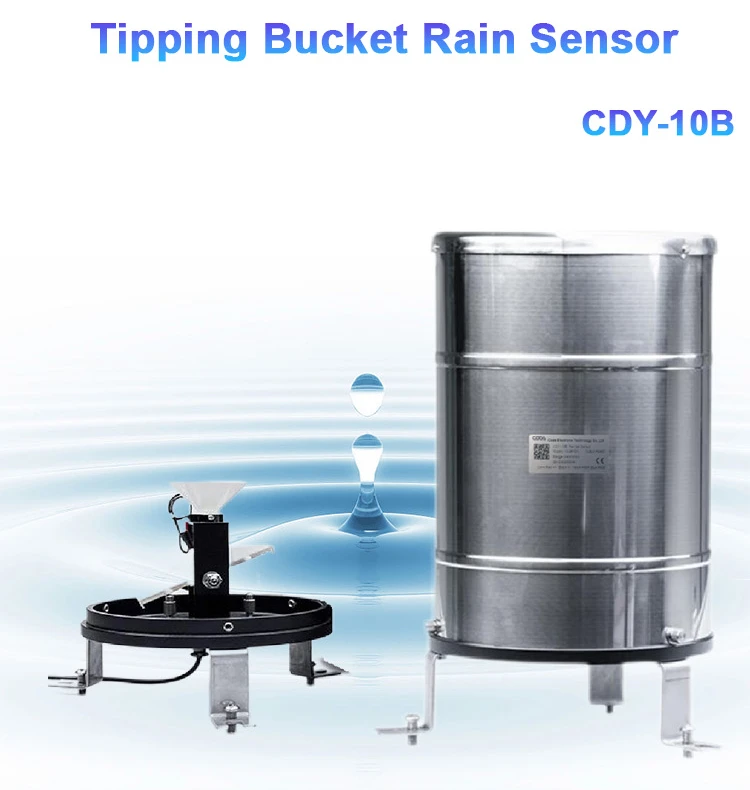Why is a rain sensor important?
A rain gauge, also referred to as a rain sensor, is an instrument designed to measure precipitation accurately. It typically comprises a collection vessel and a recording mechanism. During rainfall, droplets fall into the vessel, which engineers precise collection while minimizing evaporation. The recording device documents and displays the collected precipitation, either through a digital readout or an analog display.
Rain sensors utilize various mechanisms, such as mechanical, photoelectric, and ultrasonic technologies. Mechanical rain sensors usually have a funnel-shaped container. This container tilts when it collects a certain amount of rainwater. This action allows the device to record the data. Photoelectric rain sensors detect falling raindrops with light beams. They measure rain by checking the duration of the blocked light beam. Ultrasonic rain sensors assess precipitation using the reflection of ultrasonic waves.
Applications of rain sensors span meteorology, hydrology, environmental monitoring, and agriculture. They play a crucial role in understanding local precipitation patterns, facilitating improved forecasting, management, and resource regulation.
Key Reasons Rain Sensors Are Important:
1. **Meteorological Forecasting**:
Rain sensors are integral to weather observations, supplying vital data for accurate weather predictions. This information assists communities in devising appropriate defensive measures and making informed decisions.
2.**Flood Warning**:
Rain sensors help monitor rainfall and check flood risk. They analyze precipitation levels in different areas. This is particularly essential for regions prone to flooding, such as coastal zones, river basins, and mountainous areas. Prompt warnings can mitigate flood-related damages effectively.
3. **Water Resource Management**:
Rain sensors help track rainfall. This information allows resource managers to make smart decisions about water use. They can manage reservoir storage, irrigation systems, and city water supply networks.
4. **Agricultural Management**:
In agriculture, rain sensors help farmers optimize irrigation practices by preventing overwatering or underwatering. This boosts crop yields and enhances crop quality, while precipitation data also provides valuable insights for agro-meteorological assessments.
5. **Environmental Monitoring**:
Rain sensors are important for keeping urban drainage systems working. They help stop sewage overflow during heavy rain. By monitoring rainwater discharge volumes, they assist in protecting ecosystems and maintaining urban sustainability.
6. **Energy Production**:
In areas like hydroelectric power and wind energy, rain sensors help by analyzing rainfall data. This data forecasts hydropower or wind energy outputs. This supports strategic planning and efficient energy management.
In summary, rain sensors are instrumental across diverse sectors such as meteorology, hydrology, agriculture, environmental monitoring, and energy production. Their ability to provide precise precipitation data supports robust forecasting, efficient management practices, and informed decision-making. Beyond improving daily life and production activities, they promote environmental preservation and sustainable development. The widespread application and evolution of rain sensors are therefore highly beneficial for both society and the natural world.
